There are about 2 billion websites today, of which 83% are inactive. That means about 17%, or 340 million, are active. No matter how you cut it, hundreds of millions of websites are competing for user attention. This number of competitions means that getting a high ranking in search engine result pages (SERPs) won’t be easy. It is a popularity contest, after all. But with so many ‘contestants,’ achieving popularity can be pretty tricky.
Getting into Page One of SERPs is the Holy Grail of search engine optimisation (SEO). It’s an elusive yet attainable goal that, when achieved, could catapult your website from digital obscurity to a website with clout. So, how can you attain that goal?
There are several SEO strategies to create an effective content link-building strategy, including making helpful content that attracts backlinks. Attracting links is among the easiest, so much so that many website owners in the early days of the world wide web resorted to stuffing content with spam links.
But that tactic won’t work anymore. Gaming the system with spam links wouldn’t work in today’s search engines. Search engine algorithms, like Google’s Penguin 4.0, have come a long way. Content-based link building has grown more sophisticated.
Nowadays, you’d want to build backlinks legitimately and organically. And one sure-fire way of doing that is to create content that attracts backlinks like flies to honey.
But first, below is a brief discussion of backlinks.
An overview of backlinks
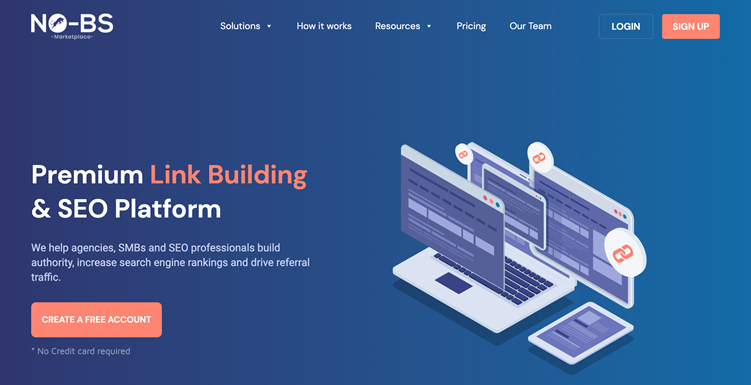
Backlinks, also known as incoming or inbound links, happen when a site creates a hyperlink (link for short) to another site. Backlinks are an essential factor in a website’s SEO.
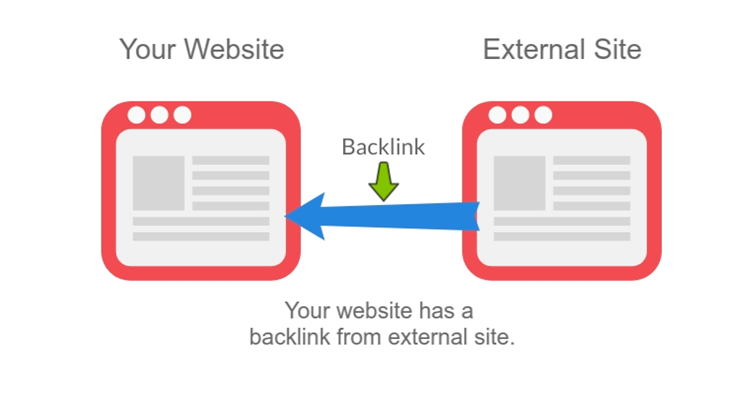
When it comes to website ranking, Google considers backlinks as one of the main factors for giving recognition to a site’s trustworthiness. As far as Google is concerned, backlinks are ‘signals’ that the search engine interprets as the website having valuable content – valuable enough that other sites link to it as a reference. The search engine will then decide that the site is worthy of ranking higher in SERPs.
Moreover, backlinks make it easier for Google and other search engines to find your site through web crawlers or spiders. These search engine bots ‘crawl’ over sites’ contents and index them. Quality backlinks can make search engines find your site quicker.
Consequently, users wouldn’t find your content easily if it doesn’t appear in SERPs.
Links in a search engine’s algorithm aren’t a new concept. PageRank, Google’s earliest algorithm introduced in 1998, featured backlinks among the factors in webpage ranking.
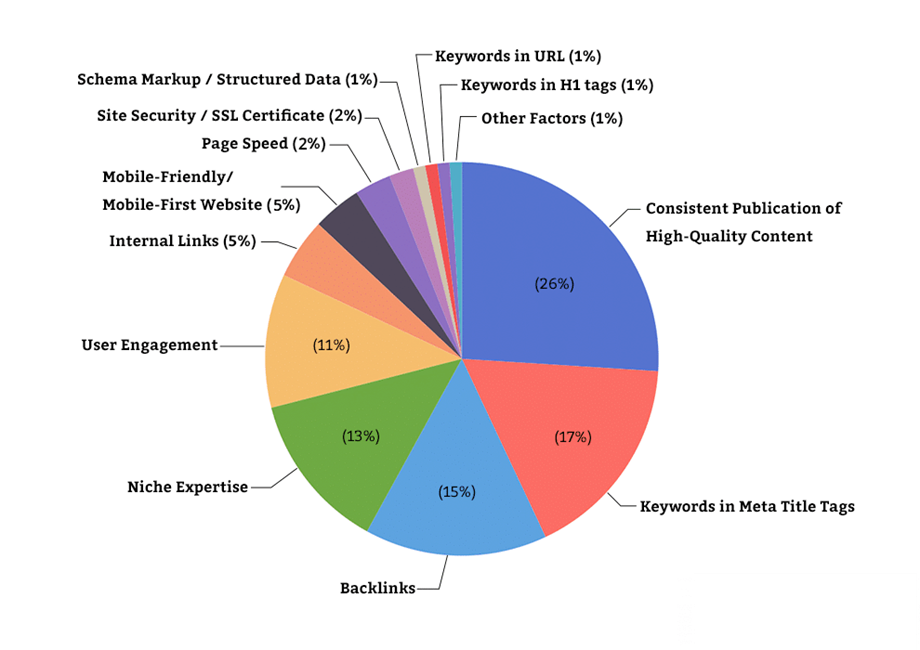
The algorithm has undergone numerous changes since then, but backlinks remain an essential ranking factor. Attracting links is a particularly tricky part of SEO, however. Google’s constant rule updates regarding backlinks keep SEO experts on their toes.
Two types of backlinks
There are several types of backlinks, but when it comes down to the nitty-gritty, there are two main backlink types:
1. No-follow links
This type of link makes a site look more natural. However, ‘link juice’ may not be passed on to your website. No-follow links essentially instruct a crawler not to check the link on the other side. But they can still impact your keyword portfolio by diverting traffic to your site. They provide referral traffic.
No-follow link tags are typically used to prevent user-submitted links, which can be irrelevant and spammy. No-follow links discourage this practice.
Be that as it may, these links can also provide backlink diversity to your website, which is a more natural state of affairs in the eyes of search engines. Your site will look suspicious to search engines if you only have do-follow links.
2. Do-follow links
These are the type of links that have a positive effect on your site. They can give you that sought-after link juice and help your site get a higher SERP ranking. Do-follow links, unlike no-follow links, let search engines like Google point back to your site.
Every time a do-follow link is inserted into your content, it’s a vote of confidence for your site. The presence of these links informs search engines that your site is trustworthy and that other websites think so too – they link back to you, after all.
A good link profile is to have balanced do-follow and no-follow links. While do-follow links are excellent for your SEO, you also need no-follow links in your digital marketing strategy to even things out.
Types of Content that Attract Backlinks
Backlinks are typically beneficial. But not all backlinks are created equal. Some may be more desirable than others. For example, backlinks from reputable, clout-heavy sites from your industry are best.
However, creating great content may not be enough to attract those valuable links automatically. You have to purposefully make content types which high authority sites like to link to.
So, what type of content works best for attracting backlinks? Read on.
1. Infographics
Infographics are a visual representation of data that combines images, texts, diagrams, charts, and video. As a tool for presenting data and explaining complicated issues, infographics are effective. They help people gain a quick understanding of the topic.
Here’s an example of a compelling infographic: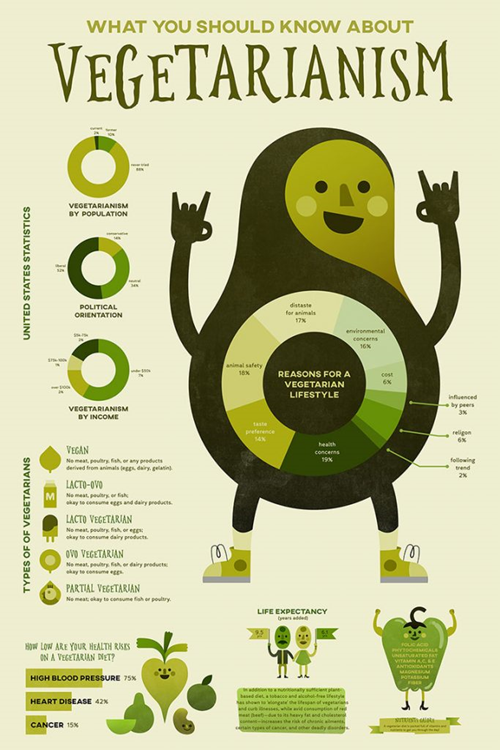
Visuals are effective at grabbing a reader’s attention. They make processing information quicker. If you can process a piece of information quicker, you can also make decisions faster. That’s why almost 50% of marketers consider visual marketing very important for content marketing and link building.
Plus, infographics are eminently shareable. They’re easy to digest and fit platforms like social media, emails, and other websites. With these features, the visual representation is three times likelier to be shared than any other visual content on social media.
For your infographic to successfully attract backlinks, include text that discusses the visual platform first. Plunking down an infographic in the middle of the page without a proper explanation wouldn’t work. Search engines like Google wouldn’t be able to rank content with only images. They need to know the page on which the image belongs. And, of course, keywords are a significant part of all this. Make keywords a part of the summary, so your favourite search engine can locate and index the page. Otherwise, users won’t find it.
2. How-to guides
Guides are handy because they can simplify complex processes by providing precise and systematic instructions. This content gives readers directions or tutorials on completing a specific task, usually involving a numbered step-by-step instruction.
How-to guides are helpful to many. Understandably, they’re some of the most popular contents. For example:

Content like this work because they meet a specific need or solve a problem, and you’re helping them accomplish a goal.
Today, you can find guides and how-to articles for just about anything – from cooking a perfect hard-boiled egg to building your robot. In-depth, long-form content (articles with more than a thousand words) with instructions on accomplishing a goal is an excellent link magnet.
Other sites would recognize it as an authoritative and valuable resource and start linking to it to share the knowledge with their readers. So, when writing how-to guides that can attract backlinks for your site, be sure to:
- Make it simple and concise: See to it that every stage is understood easily and as brief as possible. Instructions should be short, devoid of fluff, and with no extraneous details that might distract the reader. How-to guides are typically written as an instruction to accomplish something. They should be written with directions that help readers focus on the task.Thus, how-to guides don’t beat around the bush. They don’t overwhelm the reader with jargon or self-indulgent observations that don’t add practical value to what the reader seeks.Additionally, trying to include everything in a single sentence or paragraph can result in an intimidating wall of text. So, if you’re writing about a complicated procedure, try to split the concept into small, bite-sized topics for easier mastication.Use bullet points, headings, and numbered lists. These elements will prevent the dreaded text wall and make the text more pleasant to read.
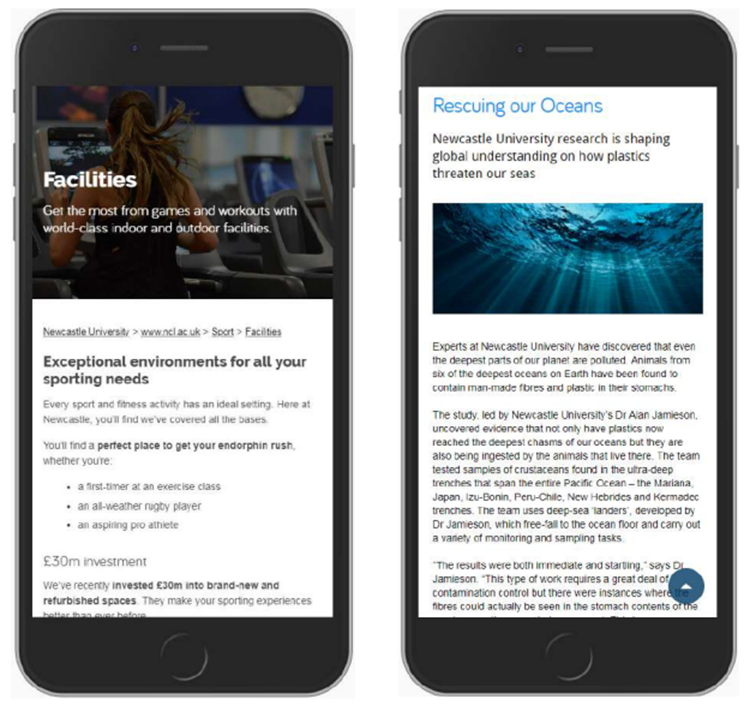
The image on the left shows an article written in short sentences and paragraphs with bulleted points for easy reference. The one on the right contains walls of text. Which one do you think is easier to digest? - Include visuals and examples: As mentioned earlier, visuals effectively drive a point across. If used conscientiously in how-to guides, visual aids are potent tools that help readers better understand the accompanying text.Screenshots add another useful visual element. These visuals help a reader form a picture of what you’re trying to describe without waiting for the image to load on their screens, which can sometimes take time.Aside from screenshots, providing examples as often as possible gives additional context to what you’re describing. You can also link to other relevant content to bolster the information you’re providing to readers.
- Use the active voice: Don’t use passive voice when writing how-to guides. As much as possible, use the active voice. Instead of writing, ‘Boiling an egg should start with the placement of the eggs at the bottom of the saucepan,’ write something like this: ‘Start with placing the eggs at the bottom of the saucepan.’The passive voice is vague. It uses more words than necessary and can result in a heap of tangled prepositional phrases. And who wants that? Not the reader who only wants to find out how to cook the perfect hard-boiled egg. How-to guides are sought, read, and shared online by readers, especially if proven useful.
3. Roundup posts
- Make it simple and concise: See to it that every stage is understood easily and as brief as possible. Instructions should be short, devoid of fluff, and with no extraneous details that might distract the reader. How-to guides are typically written as an instruction to accomplish something. They should be written with directions that help readers focus on the task.Thus, how-to guides don’t beat around the bush. They don’t overwhelm the reader with jargon or self-indulgent observations that don’t add practical value to what the reader seeks.Additionally, trying to include everything in a single sentence or paragraph can result in an intimidating wall of text. So, if you’re writing about a complicated procedure, try to split the concept into small, bite-sized topics for easier mastication.Use bullet points, headings, and numbered lists. These elements will prevent the dreaded text wall and make the text more pleasant to read.
This type of post is basically – as the name suggests – a roundup of informative content in a specific niche or area of interest.
This content is an excellent magnet for backlinks because it contains practical tips, insightful views, and valuable resources. There are also other advantages that this content can add to your site, like the following:
- You’re making other people’s content work for you.
- Roundup posts promote a good relationship with other authors or bloggers.
- The people in the roundup have an interest in sharing your content on their sites and with their followers.
- You’re presenting yourself as an authority in your niche.
a. Expert roundup: It’s a collection of answers to a question from a panel of people who are authoritative sources or experts in their niches.
Here’s an example of an expert roundup post:
[caption id="attachment_7242" align="aligncenter" width="508"] Image Source: TootSweet4Two[/caption]
Image Source: TootSweet4Two[/caption]
b. Content roundup: Content roundup (also called by some people link roundup) posts feature a list of authoritative sources for a certain topic. Posts from various sources written by various individuals are put together, resulting in valuable curated content.
This post can also be a series – monthly, weekly, or whatever range you want. The post tends to be brief, but its real value lies in the content or pages it links, which is why it works very well in attracting backlinks.
Here’s an example of a content roundup post: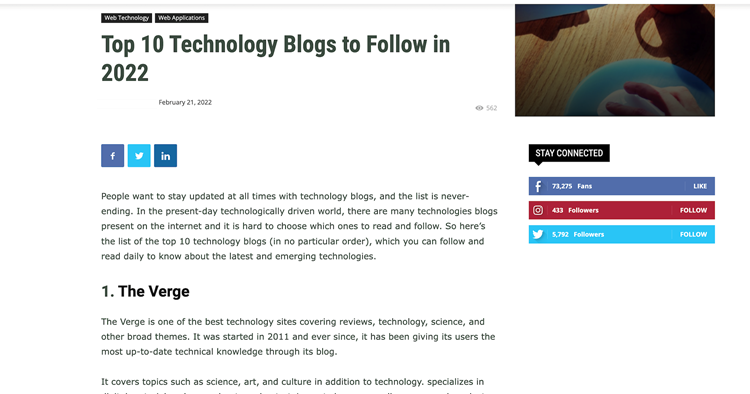
4. Original research
‘Content is king,’ as Bill Gates famously wrote in an article in 1996. Having said that, original, well-researched content is royalty among contents. This type of content stands head and shoulders above all the other content types. They’re unique to the site and can’t be found anywhere else.
Research posts are typically long-form content containing data from original research or an analysis of existing data. However, there aren’t many websites that do this. A post that contains original research can take considerable effort to produce.
But when done properly, this content can be a dynamic tool that attracts a lot of links, encourages engagement, and promotes leads.
There are many forms of original content. They can be:
- Interviews
- Case studies
- Experiments
- Whitepapers
- Investigative journalism
Original research content gives a significant boost to your site’s credibility. The higher your credibility, the better your chances of acquiring high-quality backlinks. Original research reports, at least the ones that garner thousands of backlinks, have interesting and valuable data.
As well they should; otherwise, people from whom you want to get quality links, like highly-regarded bloggers and journalists, won’t notice them. And these bloggers and journalists also prefer people to read their content. So, if your content is exciting and helps them increase their views, you’d get those backlinks.
An original research post on your site shows you have unique insights and knowledge of your niche or industry. However, cranking out an original research post isn’t enough, as difficult as it may be to create one. If you want to make credible, original research content that will get noticed, below are a few suggestions:
a. Focus on one narrative
When researching a project, don’t make the mistake of falling down into rabbit holes. Focus on your topic. Keep tight control of your writing. Otherwise, you’d end up wasting time and resources.
For example, artificial intelligence (AI) is a broad subject. If you want to create a research report about it, narrow your focus down to, say, AI and its uses in cybersecurity. With a narrower field, you can give a more meaningful, engaging, and useful article that tackles an important and relevant topic like AI in cybersecurity.
b. Disclose the methodology
State your research methodology. For example, you can disclose the sample size, respondents' selection, and the relevant demographic details. These details can assure your readers of the legitimacy and relevance of the research.
c. Avoid pushing a specific point of view
Don’t make your research self-promotional. Designing questions that push an agenda or a product will not go over well with the respondents. The result won’t be credible either. If that happens, you’d have wasted time, effort, and resources.
d. Include stand-alone charts and graphs
A research report published on your site should be accompanied by graphs and charts that can stand alone. This means that it should contain all the essential data a reader needs to understand the point of your research.
Here’s an example of a graph showing research results:
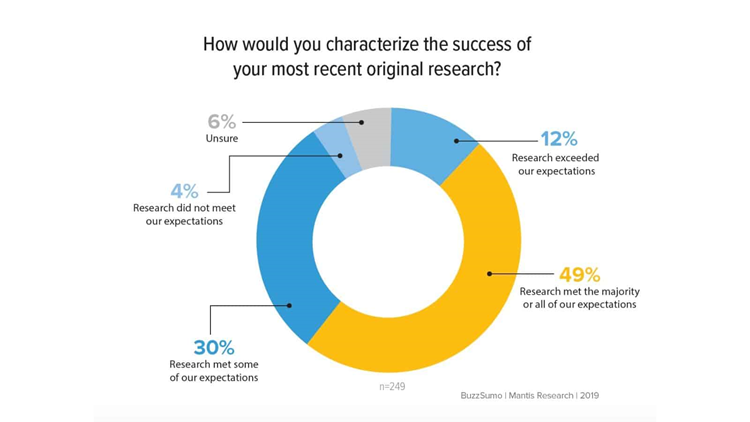
The source, sample size, questions, and main findings should be easy to see. This inclusion will make the charts and graphs more shareable. Design your visuals, not to dazzle, but to show clarity.
5. Lists of curated content
Conducting your research, producing your data, and posting the results on your site establishes your authority effectively. Content creators always look for sources to link and cite, after all. However, not all companies have the wherewithal to conduct expensive, time-consuming research.
The next best thing is to curate research results and post them on your website. You can collect relevant lists, case studies, and research for content creators and writers. Research usually takes the most time when creating content, so data neatly compiled into an easy-to-read post is extremely valuable.
Here’s how it looks: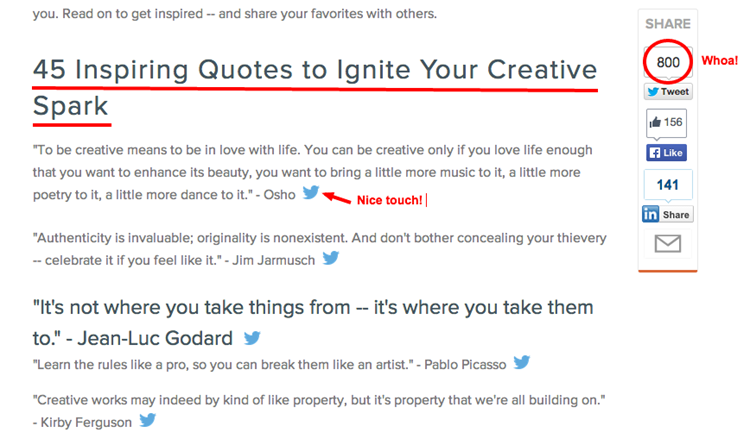
Content made up of collected facts and statistics is a big help to other content creators and writers. If they find your list, they’ll cite it and link it. You can do your own ‘fact-finding’ mission around the internet and collect useful and relevant case studies, which can be a bit trickier to find.
Curated results in a single post can be extremely convenient for writers and content creators. They wouldn’t have to open another tab to check related statistics on other sites.
You don’t have to collect a giant compilation of statistics, though. Depending on the demographics of your target market, a smaller and more specialized compilation of statistics suitable for your niche is more appropriate and easier to collect – for example, a collection of statistics on email marketing for marketers from a specific sector.
You can also compile lists that other writers can use as a springboard for their articles. For instance, a list of the world’s costliest types of cybercrimes can be used by content writers researching the importance of web security solutions. Such a list needs regular updates, but it can earn evergreen links for your site.
[caption id="attachment_7246" align="aligncenter" width="672"]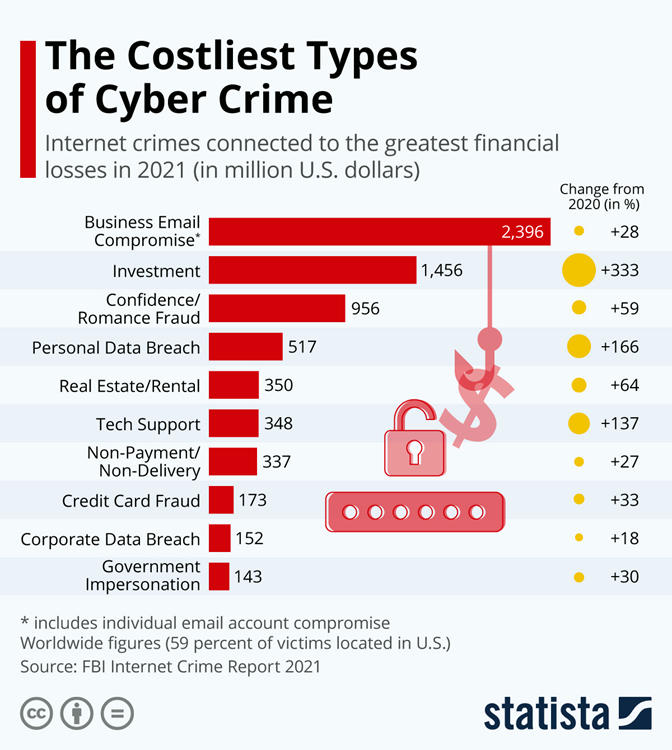 Image Source: Statista[/caption]
Image Source: Statista[/caption]
Data statistics are essential to every content writer. They need this type of content to shore up their arguments. If doing your own research isn’t feasible, a compilation of other data found on the internet will do nicely as well. All you have to do is compile and write them as one single but extremely valuable article.
Conclusion
Backlinks are an important commodity among websites. They bestow authority and credibility on a website, which translates to higher SERP. Thus, attracting backlinks organically is crucial for any site that wants to reach a wider audience.
One of the most effective methods of attracting quality backlinks is to create great content. But not just any great content. There are content types that are more effective than other content at attracting backlinks, such as infographics and roundup posts.
